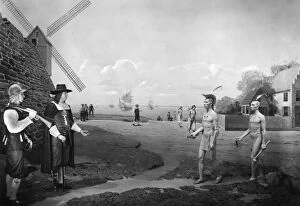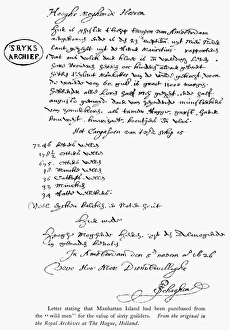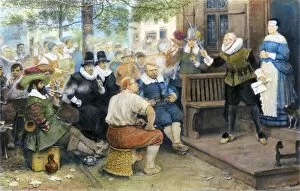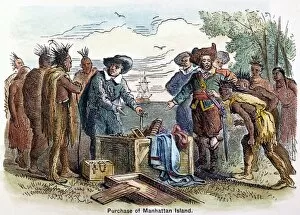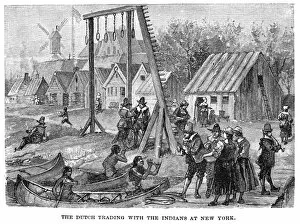New Amsterdam Collection (#3)
"Exploring the Rich History of New Amsterdam: A Glimpse into 17th Century New York" Step back in time to the bustling streets and canals of New Amsterdam
All Professionally Made to Order for Quick Shipping
"Exploring the Rich History of New Amsterdam: A Glimpse into 17th Century New York" Step back in time to the bustling streets and canals of New Amsterdam, a vibrant Dutch settlement that would later become the iconic city we know as New York. This captivating period is brought to life through historical artifacts and depictions. The Castello Plan of 1660 provides us with a rectified redraft, offering an invaluable glimpse into the earliest known plan of New Amsterdam. It reveals a meticulously planned cityscape that laid the foundation for future development. One notable event etched in history is the Manhattan Purchase of 1626 by Peter Minuit, a Dutch colonial official. Alfred Fredericks' painting immortalizes this significant transaction, which shaped the destiny of Manhattan Island. Dutch colonists played an integral role in shaping early New Amsterdam's culture and society. Their influence can still be felt today as we walk through its streets and admire their architectural legacy, such as The Cortelyou House from 1699 at Fifth Avenue and Third Street in Brooklyn. A map from 1685 showcases New Netherland's vast territory, encompassing Novi Belgii Novaeque Angliae. This visual representation highlights both its strategic location along Colonial New York harbor and its potential for growth. As ships approached from afar, they were greeted by breathtaking views of New York City emerging on the horizon during the 17th century. These scenes captured imaginations then just as they do now – evoking awe and wonder at this thriving metropolis. Engravings like "New Amsterdam" (1815) transport us back to an era when horse-drawn carriages traversed cobblestone streets while pedestrians bustled about their daily lives amidst charming buildings that dotted the landscape. On special occasions like Christmas or even on ordinary days, "The Graphic"Christmas Number offers glimpses into Old New York's celebrations, reminding us of the traditions and festivities that once filled its streets.




